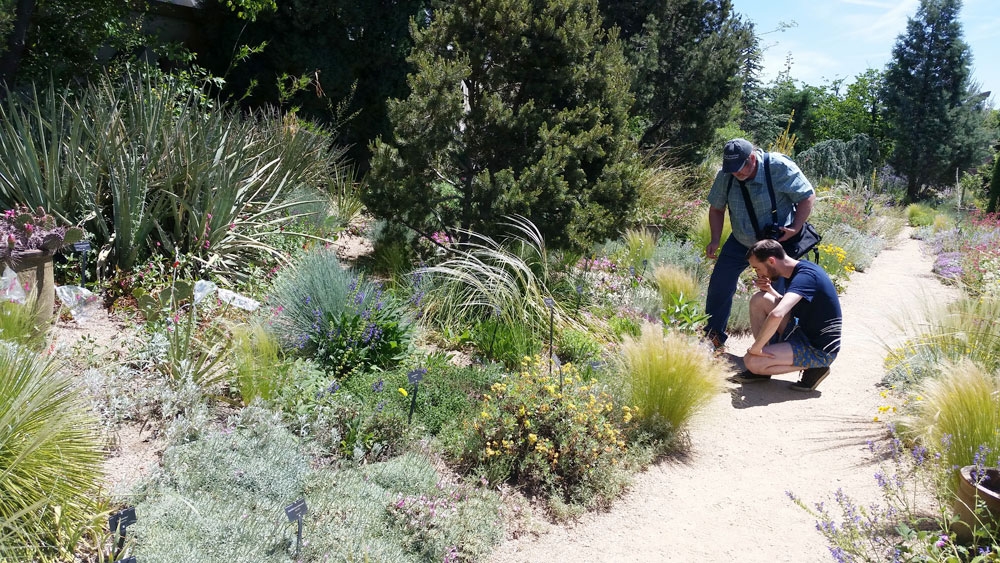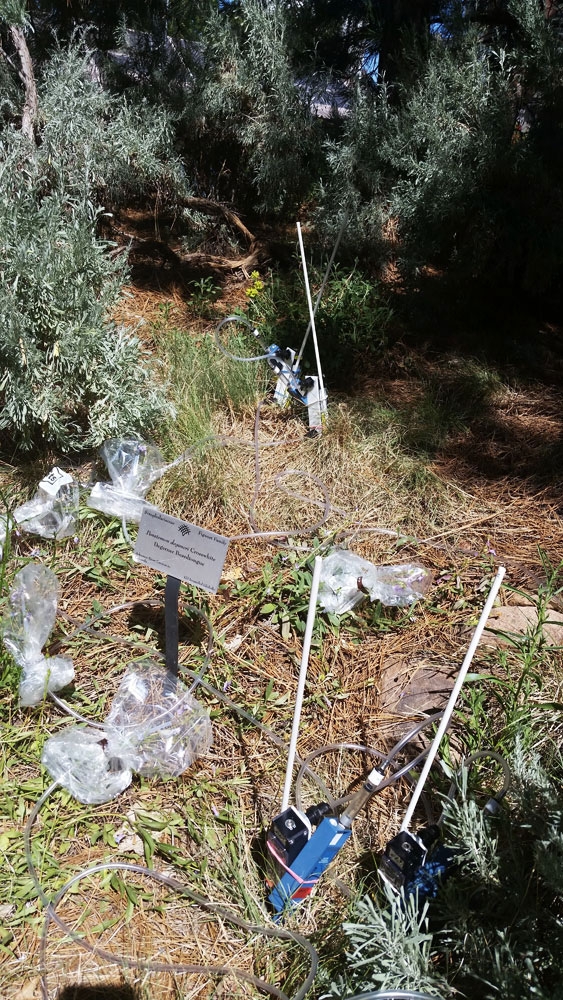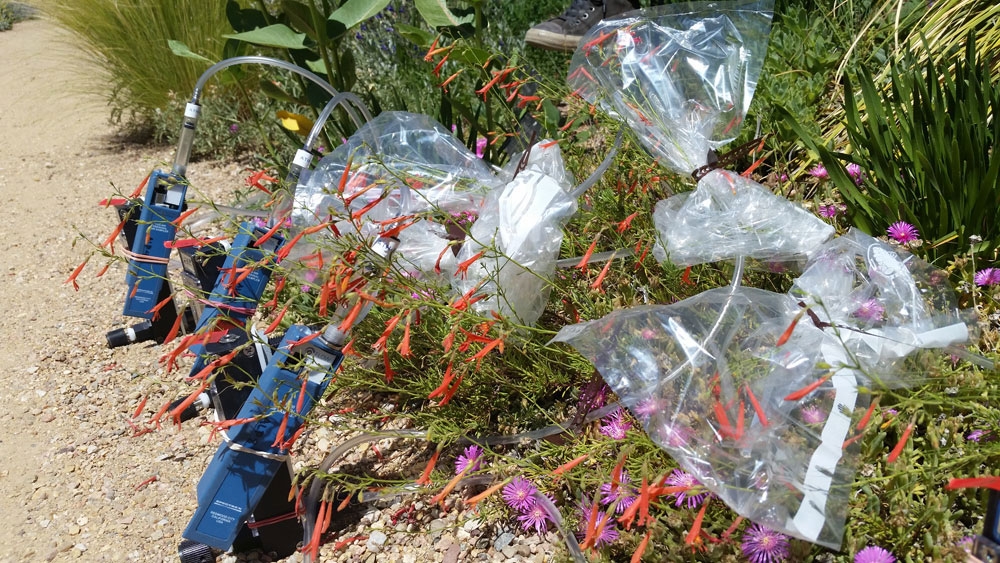Scent Studies of the Gardens’ Penstemon Collection
The Gardens is more than just a pretty place. Behind the paths and petals, there is research going on both inside the gates and beyond. Due to more international communication through Botanic Gardens Conservation International’s (BGCI) PlantSearch and the ability of researchers to find out about our collections from our online collections database, Gardens Navigator, we have fielded a much higher number of requests in recent years including sharing of leaf or seed samples for genetic research, and live plant or seed sharing to enhance collections of other botanical institutions. In some cases, we can host a researcher for more than just a one-day visit as they do their work on site.
That is the case this week. An odd-looking, but fascinating research project is currently happening throughout many of the native gardens at York Street. Joe Anderson, a British research associate from Uppsala Universitet in Sweden, is collecting the scent of our Penstemon flowers. This research is part of a project lead by Dr. Amy Parachnowitsch to determine how the species has evolved in regards to pollination. Their four aims in conducting this research is to:
- “Assess floral scent diversity across transitions between insect and hummingbird pollination to elucidate the role of scent in speciation."
- "Compare transitions of scent loss in selfing species with hummingbird pollination to assess whether shifts in floral scent are generalizable."
- "Determine geographic variation and co-variation of floral scent and other floral characters a single species in the context of specific plant-animal interactions and local adaptation."
- "Quantify the underlying genetic architecture of floral scent and how it relates to shifts between pollinator groups.”
Modified plastic oven bags with attached tubing and a battery-operated pump are placed over a few Penstemon flower spikes for about 4 hours. Scent is then captured in the bag and data is recorded. Joe is also photographing the flowers and will view them from under a spectrophotometer to analyze fine details of the flower color in hopes to determine a correlation between color and fragrance, in addition to collecting nectar from individual flowers.
So far, Joe has looked at P. degeneri, P. pseudospectabilis, and P. pinifolius and he has plans to continue sampling two or more species per day until he departs. This research is largely non-destructive, meaning that the plants and their flowers are not harmed and remain for our visitors to enjoy after the plastic bags are removed, other than the collection of a few flowers for the spectrophotometer work.
Why did they decide to do research at the Gardens? One of the species they are tracking, Penstemon digitalis, is found in the eastern US and is common in cultivation, but we have a large collection of many other species native to the western U.S. Joe also plans to conduct research in the Rocky and Sierra Nevada Mountains.
We are currently the only botanic garden participating in the project, though collections in Europe may be tapped for follow-up research. Having multiple documented species in one location also makes this sort of research more cost-effective and easier for the researchers. The value of our plant collections continues to grow through our participation in projects.
If you visit in the next few days, you may come upon this research in action!
Gallery



Add new comment